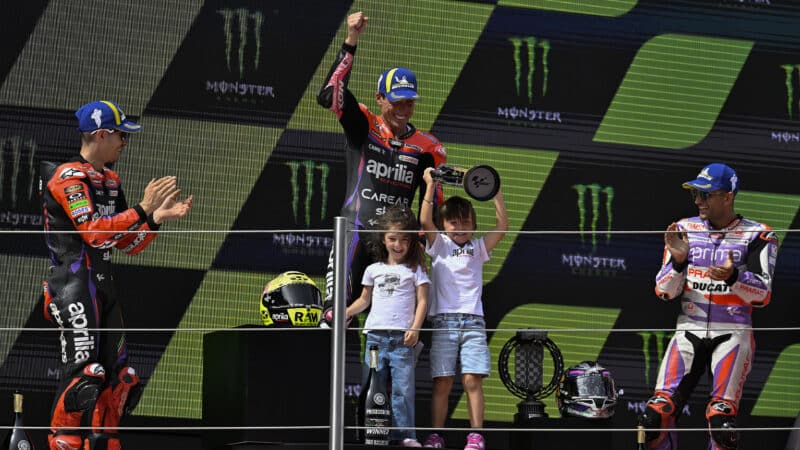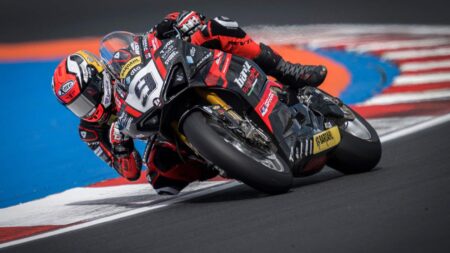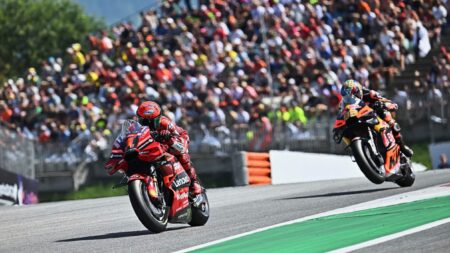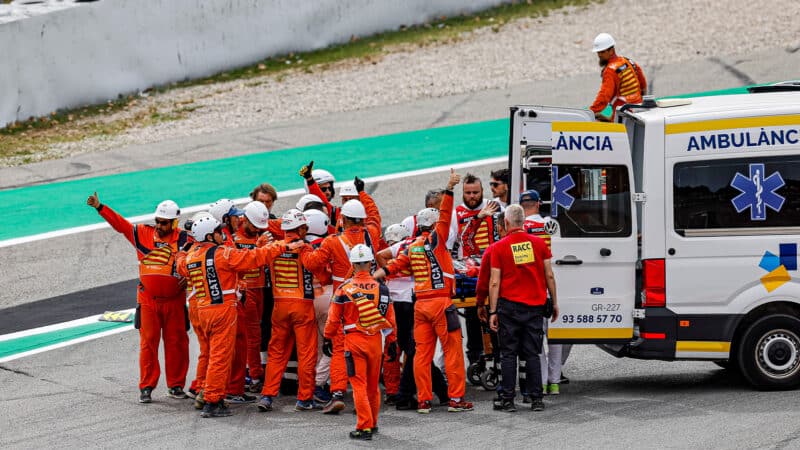“I used to come here to watch in the 1990s to cheer the 500 heroes and here I am now, on top of the world,” said the 34-year-old veteran after winning Sunday’s grand prix, which ended with a truly ‘awwwww’ moment when his twin children Max and Mia presented him with the winner’s trophy atop the podium.
The dedicated family man’s current speed disproves several racing maxims: you get slower when you’re older, you get slower when you have children and you get slower when you’re in love. For this last reason it’s not unknown for MotoGP rider managers to ban their young wealth generators from having girlfriends, “because being in love makes you lose seconds”.
Espargaró’s Aprilia team was similarly overwhelmed after making its own little bit of history on Sunday. Catalunya was the Noale factory’s first double victory of MotoGP’s new age – Espargaró winning both Saturday and Sunday races – and also its first-ever premier-class one-two (Espargaró ahead of team-mate Maverick Viñales), after almost three decades of trying.
Of course, Aprilia used to be the kings of the smaller classes, when two-strokes were still ringa-dinga-dinging around GP circuits. The factory won 294 125cc and 250cc GPs between 1987 and 2011, helped by Dutch chief engineer Jan Witteveen and a clever young local called Gigi Dall’Igna. But a one-two in the premier class is next level.
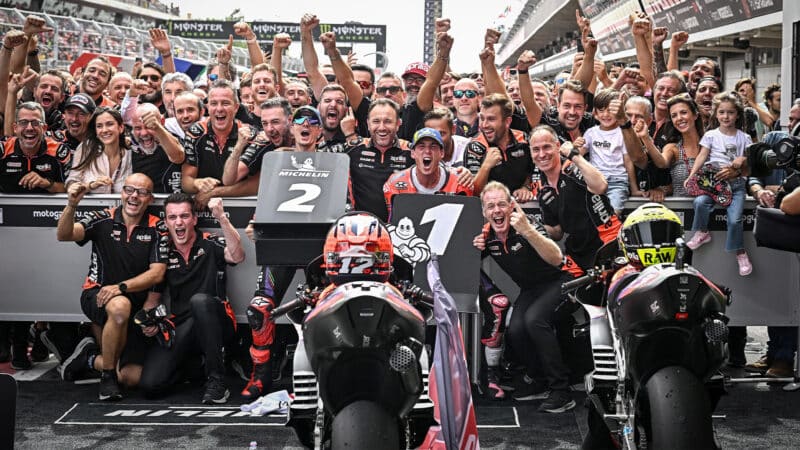
Aprilia in heaven – celebrating its first-ever premier-class one-two
Aprilia
Espargaró has been with Aprilia since 2017, riding the RS-GP when it was little more than a sick frog, incapable of even getting within a sniff of the podium prosecco party.
And luckily he stayed with the factory when the bike was transformed into a fine princess in 2020, thanks to a crucial change of engine configuration. The RS-GP got better still in 2021 with superb new aerodynamics and since then the Noale engineers have working on all the details to get better and better.
“Changing the angle of the vee completely changed the bike – it was easier to ride, the throttle connection was clean and there was no vibration,” explained Espargaró. “Also, with the old bike we worked a lot with the chassis, but all the problems came from the engine.
“There was always a lot of vibration, which gave a lot of chatter and made the bike super-nervous on the brakes. You had to be super-precise, so in the wet it was a nightmare. From 2017 to 2019 we made no f**king progress at all.”
Now the RS-GP is as good as Ducati’s dominant Desmosedici at some tracks and better than the big red Duke at others, like Catalunya, where Espargaró and Viñales were in control from Friday morning.
Catalunya is fast and flowing, like Silverstone, where Espargaró won last month and Termas de Rio Honda, where he and the RS-GP won for the first time last year.
Somehow the RS-GP isn’t like MotoGP’s other V4s, the Ducati, Honda and KTM, which are point-and-squirt bikes. Somehow the RS-GP has some inline-four character to it, so it flows through corners and can use more corner speed than its current rivals, the Ducati and KTM.
Of course, Aprilia engineers aren’t going to tell us how they make this happen but one of them told me the secret is hidden somewhere in the steering head area and is something they learned from their RS250 GP bike, which won twenty riders’ and constructors’ world titles between 1994 and 2009.
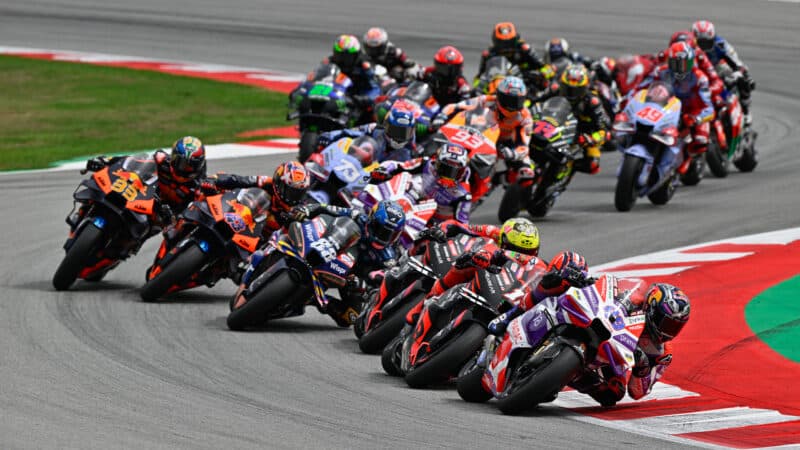
Martin leads the restart, chased by the Aprilias of Viñales, Espargaró and Miguel Oliveira, who finished fifth
Dorna
Perhaps it’s a flex thing, so the frame twists laterally through the corners to give the chassis some self-steering “banana effect”, as Moto2 dominators Kalex like to call it.

